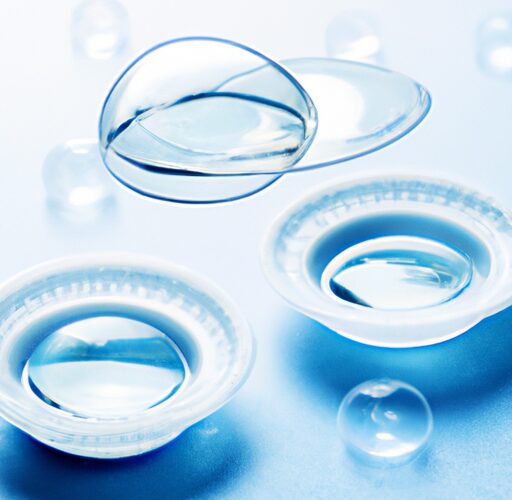What Is a Toric Contact Lens Prescription?
Introduction
Contact lenses are a convenient alternative to glasses for people with vision problems. They can correct various types of refractive errors, including astigmatism, myopia, and hyperopia.
If you have astigmatism, your eye’s shape is not perfectly round, which can make it difficult to focus on objects at different distances. Fortunately, toric contact lenses can address this problem and provide clear vision.
In this article, we’ll explain what toric contact lenses are and how they differ from regular contact lenses.
What Are Toric Contact Lenses?
Toric contact lenses are designed to correct astigmatism, which is a common eye condition that affects many people. Unlike regular contact lenses, toric lenses have two different powers: one to correct the spherical error of your eye and another to correct the astigmatism.
Toric contact lenses have a unique shape that helps them maintain the correct position on your eye. They are thicker and heavier at the bottom to prevent them from rotating, which can cause blurry vision.
How Is a Toric Contact Lens Prescription Different?
If you have astigmatism, your prescription for toric contact lenses will be different from a regular contact lens prescription. The prescription for toric lenses will have two additional measurements, called cylinder and axis.
The cylinder indicates the amount of astigmatism correction needed, and the axis shows the angle at which the lens must be oriented to correct your vision. These numbers are usually written as a fraction, such as -3.50 -1.25 X 180.
It’s essential to get the exact prescription for toric lenses because they need to fit precisely on your eye to correct your vision. A wrong prescription can cause discomfort, headaches, and blurry vision.
Types of Toric Contact Lenses
There are two types of toric contact lenses: soft and rigid gas permeable (RGP). Soft toric contact lenses are made of silicone hydrogel or other soft materials and are the most common type of toric lenses. They are more comfortable to wear than RGP lenses and can provide a stable fit on your eye.
RGP toric contact lenses are made of a rigid, gas-permeable material that provides a sharper image than soft lenses. They are more durable than soft lenses and are suitable for people with high astigmatism. However, they take longer to get used to because they are harder and less flexible than soft lenses.
How to Insert and Remove Toric Contact Lenses
Inserting and removing toric contact lenses is similar to regular contact lenses. Here are some easy steps to follow:
1. Wash and dry your hands thoroughly.
2. Open the contact lens case and remove the lens.
3. Hold the lens between your index finger and thumb and check that it’s not inside out.
4. Use your other hand to hold your upper eyelid up and your lower lid down.
5. Place the lens on your eye and release your lids.
6. Blink a few times to align the lens properly.
To remove the lens, follow these steps:
1. Wash and dry your hands thoroughly.
2. Look up and pull down your lower eyelid.
3. Use your index finger to slide the lens down to the white of your eye.
4. Pinch the lens between your index finger and thumb and remove it from your eye.
Conclusion
In summary, toric contact lenses are designed to correct astigmatism and provide clear vision. They have a unique shape and prescription and are available in soft and rigid gas permeable materials. If you have astigmatism, toric lenses can be an excellent option for you. Talk to your eye doctor to determine if toric contact lenses are right for you.

